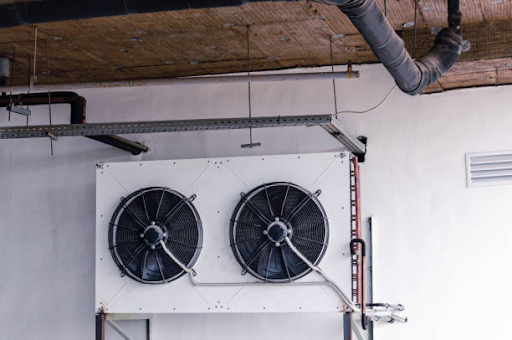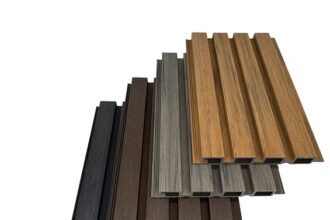In contemporary industrial workplaces, electrical cabinets serve as the command and control centers of the operations. They store crucial electronic components such as PLCs, HMIs, motor drives, and power modules. Due to advancing automation and intelligent systems, these enclosures produce more heat than they ever have. Systems can overheat, fail, or experience a drastic reduction in efficiency without proper electrical cabinet cooling systems in place.
To safeguard the equipment and sustain peak performance, B2B sectors such as factory automation, energy, transportation, and telecommunications need to adopt effective enclosure cooling solutions.
The Importance of Electrical Cabinet Cooling in Industries
Maintaining an appropriate temperature is a point of concern for industrial systems and operates on a “must-have” basis. The surge of high ambient temperature, confined physical spaces, constant use, and ongoing automation tasks applies immense pressure on electronics that are sensitive in nature. Components that are prone to overheating tend to shut down and go through damage, increased downtime, and unplanned maintenance. This is something that industrial buyers and engineering teams need to subfactor under every cabinet design.
Effective electrical cabinet cooling achieves the following:
- Helps maintain the optimal temperature inside the cabinet
- Shields from dust, moisture, and corrosive air ingress
- Prevents overheating and helps protect delicate instruments from thermal wear
- Helps in decreasing the operational failure rates and increases overall service life
- Ensures continuous operation for all essential systems
Businesses can suffer considerable equipment damage or process halts due to unreliable enclosure cooling solutions.
Passive Cooling: Control With Minimal Maintenance and No Energy Costs
Passive cooling utilizes convection, conduction, and radiation to dissipate heat. It is often employed as the first line of defense in areas with low thermal stress.
An example would be the use of ventilation louvers or slotted panels to allow the entry of cooler ambient air into the cabinet while warmer air escapes. This method is only effective when the surrounding air is clean and not too hot. Some passive methods include double walled enclosures and heat sinks to control thermal accumulation.
Because of their simplicity and zero energy usage, passive cooling has some advantages. Since there are no motors, fans, or refrigerants, maintenance is virtually zero. These systems, however, may not work well in high-density and high-temperature environments.
For equipment that produces little heat while working in a controlled temperature region, passive enclosure cooling solutions may be efficient and economical.
Active Cooling: Precision Cooling for Demanding Conditions
Active Cooling: Active cooling is needed when natural airflow is insufficient. This approach employs internal fans, blowers, or refrigeration units to manage the climate within an enclosure. It is vital when internal heat loads are high or when a cabinet is subjected to external heat, contaminants, or moisture.
There is a demand for forced-air ventilation using axial or centrifugal fans. These fans help to replace warm air within the enclosure with cooler air from outside. They are appropriate for light to moderately polluted indoor environments.
For sealed enclosures or higher performance demands, air-to-air heat exchangers or enclosure air conditioners are preferred. These systems protect the cabinet from outside pollutants and also eliminate heat effectively.
A compact option for smaller enclosures are thermoelectric coolers which operate without refrigerants by employing the Peltier effect. While these units do not provide the same cooling output as large air conditioners, their silent and vibration-free operation makes them attractive.
Another possibility are liquid cooled systems for extremely heat-dense applications. These circulate coolant through heat exchangers to safeguards high-powered electronics.
Active systems enable greater control and management of heat loads. For this reason, they are best suited for automation control cabinets in continuous operation industrial environments.
Approaches to Select Cooling Method
The choice of electrical cabinet cooling systems is narrowed down to active and passive options based on several considerations.
To begin with, consider the ambient temperature where the system will be installed. Passive systems are better for climate-controlled buildings. Active cooling is necessary in warmer, dust-laden, or outdoor settings.
Also, take into account the heat generation from inner components. If the cabinet includes VFDs, high power supplies, or dense computing units, active cooling is necessary.
Then consider environmental exposure. For dust, oil mist, or humid environments, sealed enclosures with closed-loop cooling are needed to protect internal electronics.
Of course these are important, but your choices also hinge on energy efficiency, maintenance, system integration, and other criteria. Active systems installed within automation networks provide more precise thermal management as opposed to passive methods which offer lower operational costs.
Based on your specific industrial scenario, striking the right enclosure cooling solutions will balance performance, reliability, and lifecycle cost.
Most Efficient Practices for Cooling a Cabinet
To make the most of the cooling method you’ve chosen, it is recommended to follow industry best practices:
- Address the need for cooling during the design stage to prevent retrofits and last minute fixes.
- Sensor and control boards should not be near scent heat-generating components. Position these components at the bottom of the enclosure.
- Avoid circulation blockages and maintain unobstructed airflow paths.
- Use closed thermal baffles to control airflow for certain zones or components.
- Schedule periodic checks for temperature sensors, fan filters, and condensate drains.
- Use remote monitoring or SCADA to track enclosure temperature trends and detect cooling failures.
Implementing these measures allows for the enclosure cooling solutions to increase operational efficiency while protecting equipment and reducing maintenance work.
Innovations to Expect in Industrial Cabinet Cooling
There is a shift toward more intelligent and adaptable systems due to the implementation of Industry 4.0 and the rising focus on energy efficiency.
Technologies currently being developed include variable-speed electronically commutated (EC) fans that provide real-time cooling. Systems are more energy efficient and prolong the lifespan of fans by not operating at full speed constantly.
The use of IoT technology in enabling remote diagnostics, maintenance alerts, and predictive monitoring is gaining traction in the automation industry, particularly for IoT-enabled cooling systems.
Last but not least, we see high GWP refrigerants moving further away as sustainability becomes increasingly critical for the future of cooling. Engineers are actively looking into alternative refrigerants while also investigating hybrid systems which utilize both passive and active methods to achieve optimum performance.
In conclusion, having a passive and active cooling approach for industrial enclosures requires understanding their strengths and weaknesses to build an energy-efficient and resilient infrastructure. Evolving automation systems require modern and adaptive enclosure cooling solutions to prevent operational failure while reducing the cost of operations.
















